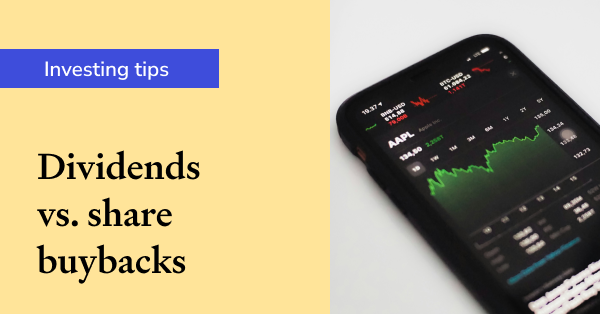7 essential tips for investing in IPOs
Disclaimer: The below article is for informational purposes only and does not constitute a product recommendation, or taxation or financial advice and should not be relied upon as such. Please check with your adviser or accountant to obtain the correct advice for your situation.
Not all IPOs are created equal. If you’re going to put your hard earned cash into the public float of a company, what are the markers of a good investment? Below are seven suggested tests that you should subject any new issue to that will hopefully put you on the plus side of the ledger when the shares actually list on the ASX.
As a general rule, investing in IPOs is a high-growth equity strategy. The OnMarket Third Quarter IPO Report highlights the fact that the 78 IPOs to list this year on the ASX between Jan 1 to Sept 30 returned an average of 25.9%. This compares to an average return of 27.1% for the same period last year. The skill lies in selecting those companies that will outperform and obviously avoiding the ones who don’t.

Here are seven essential tips that will assist you with your IPO investments. They are must haves for your IPO selection checklist.
1. Who is doing the selling?
Private equity IPOs follow the same rules as the rest of the market – though they tend to be larger, in terms of performance they are a mixed bag with a good to great chance of gaining in value.
However, after the Dick Smith disaster, investors will be expecting private equity sellers to retain a larger equity stake (and to hold on for longer) than in the past to insure against a ‘take the money and run’ scenario. So, if the IPO is from private equity, ask how much of a stake they are retaining in the company.
2. Who is going to be running the company?
Take a close look at the lists of people shown in the prospectus as directors and managers. The track record of those who are going to be in charge is vital. Do they have prior experience in the industry? How long have they been with the company? How much are they being paid? How well rounded is the board? And, critically – do they have ‘skin in the game’? That is, is their financial success tied to the company’s? If so, that’s a very good sign that management is motivated to do well. If not – it is simple - stay away.
Keep an eye out for the less obvious. For example, some small companies combine chief executive and executive chairman roles, which saves money but leaves a lot of power with one person. Do your due diligence on them, including a Google search and search ASIC’s registers for any suspect characters. One piece of negative press may be a blip or a misunderstanding but several negative articles may be a red flag.
3. What are they going to use the money for?
Companies going public seek to raise funds from investors and there should be a clear statement in the prospectus about how the money will be used.
You’ll need to investigate how the company will generate or expand revenues to increase the value of the shares you are buying. How will growth be achieved?
Importantly, keep a sharp lookout for anything that will benefit third parties, such as excessive fees being paid out to advisors, as occurs in some floats.
4. Do you understand the product?
Investment guru Warren Buffett always says if you can’t work out what a company is doing, stay away, as lots of other people will have the same problem. He’s right.
It is simple yet integral advice, and something to keep a close eye on when investing. Understanding the product may be particularly difficult when it comes to technology stocks and their love of acronyms (anyone for SAAS, PAAS, or IOT?)
The lesson here is that if you don’t understand it then remember – it’s not you, it’s them. Companies should be clear in the prospectus about what their product or service is and why it matters.
5. How big is the market for the product?
The size of the opportunity and the company’s ability to capture market share can make all the difference when it comes to growth and shareholder returns. Keep in mind that the size of the market is only an estimate based on many assumptions. These assumptions need to pass the common sense test.
For instance, say a company is selling widgets and is targeting high-income households. Consider how likely high-income households are likely to buy widgets before accepting that the market size is equal to the number of high-income households. Ask yourself, are there substitutes for their widgets? Is it a need or a want? Would the product be better off as a Main Street or High Street product? Do existing trends support the assumption that high-income households will want to buy widgets or not?
Estimating the size of the market is a ‘best endeavours’ sort of thing but if you don’t understand it or it doesn’t sit right, think twice.
6. How is the offer structured?
If the size of the market looks promising, the management is experienced, and the fees paid to advisors are reasonable, then it may look like a great opportunity all round.
But if the offer is structured so that options, convertible notes or performance shares will automatically be issued to the seller at a future date, this may dilute your shareholding. Remember, each share you buy represents your piece of ownership of the company. The more shares there are on issue, the less value each one represents. So it’s something you should investigate when deciding whether or not to invest in the company.
7. Align yourself with an IPO portal that can provide you access
It is well known that retail access into IPOs, especially sought-after IPOs, is very hard to come by. Therefore, it’s a good idea to find an IPO portal that will bring you new and interesting IPO opportunities, and enable you to get a decent allocation in the next great IPO. The OnMarket IPO portal has been described as “the app making Australian IPOs more inclusive” and the IPO platform “giving retail investors the chance to finally get treated as equals”.
FURTHER READING
- Sharesight -- Sign up for Sharesight TODAY to track your IPO investments
- Blog -- Does your investment portfolio match your appetite for risk?
- Blog -- Vice or virtue - what's the better investment?
- Sharesight Help -- Initial Public Offering (IPO)

How Sharesight helps advisors track net worth and simplify compliance
We talk to Ryan Jones, Partner, Accountant and Financial Advisor at Jones Louros, about how he uses Sharesight to manage his clients’ investment trusts.

Automatically track Swissquote trades with Sharesight
If you trade using Swiss broker Swissquote, you can automatically import your trading data to your Sharesight portfolio.

Dividends vs. share buybacks: Which is better for investors?
We take a look at dividends and share buybacks, discussing the pros and cons of each, the tax implications and which one is more beneficial for investors.